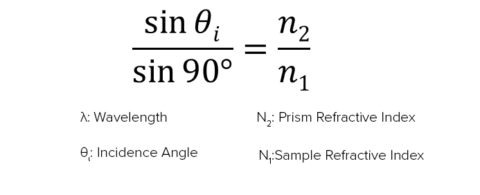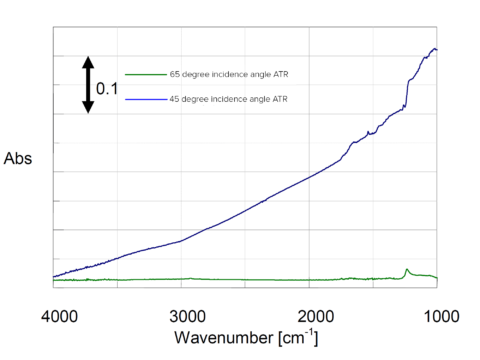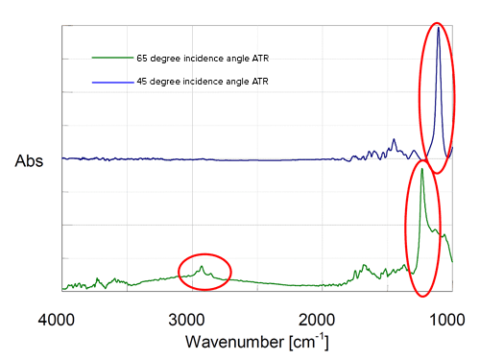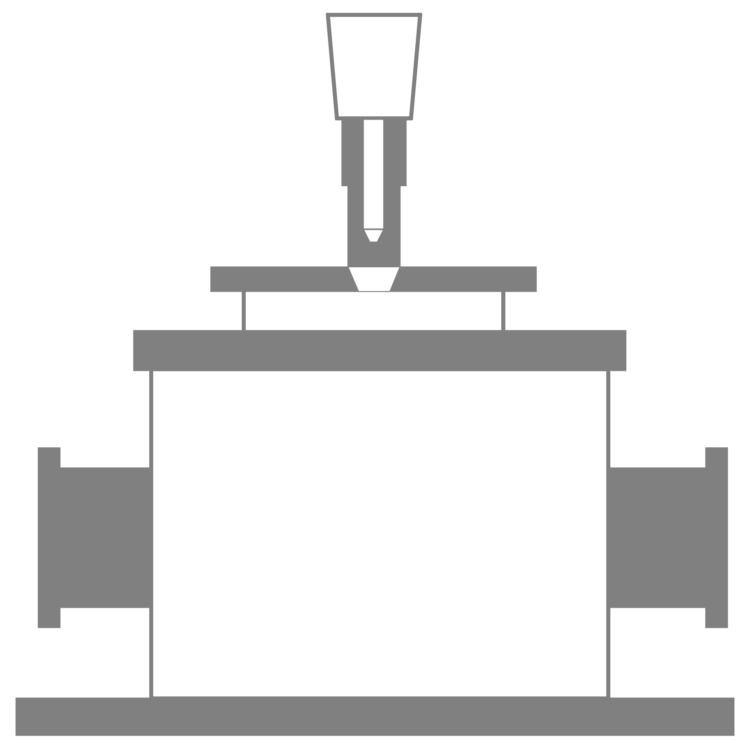Overview of a 65° ATR
ATR PRO 650G has an incident angle set at 65°. By increasing the angle of incidence, it is possible to measure high refractive index samples such as carbon-containing rubber and Si wafers. It is also possible to obtain information on the outermost surface of the sample.
The difference between 65° incident and 45° incident is the viewpoint of the sample refractive index. The total reflection condition is expressed by the formula shown below.

When germanium (n1 = 4.0) is used as the prism, the equation gives n2 = 3.6 for 65° incidence and n2 = 2.8 for 45° incidence. Therefore, a sample with a higher refractive index can be measured when it is incident at 65°.

From the equation, it can be seen that the depth of penetration depends on the refractive index, the wavelength of the incident light, and the angle of incidence.
Focusing on the inside of the route, we can see that the larger the angle, the larger the value inside the route, and as a result, the shallower the depth of penetration.
| Angle of Incidence | Prism | Lower limit of measurement on the low wavenumber side | n1 | n2 | Depth of penetration (when 1000 cm−1, n2 = 1.5) |
|---|---|---|---|---|---|
| 65° | Ge | ~ 700 cm-1 | 4.0 | 3.6 | 0.48 µm |
| 45° | Ge | ~ 700 cm-1 | 4.0 | 2.8 | 0.66 µm |
Measurement of Si Wafer
The surface of the Si wafer on which the natural oxide film was formed was measured using a 45° incident ATR and a 65° incident ATR.
It can be seen that the spectrum is significantly distorted because the 45° incident ATR does not meet the conditions required for total internal reflection.
On the other hand, at 65° incident ATR, shows there is no distortion in the spectrum and the baseline is flat.

In the spectrum acquired by the 65° incident ATR, not only the absorption peak can be confirmed near 1,235 cm-1 but also the peak of 3,000 – 2,800 cm-1 attributed to -CH absorption is observed, and a slight amount of organic matter adheres to the surface.
From this, it is possible to obtain information on the outermost surface of the sample, which cannot be confirmed by the transmission method, by using the 65° incident ATR.

| ATR Prism | Ge |  |
| ATR/Sample Contact Area | 3.0 mm diameter | |
| No. of Reflections | 1 | |
| Angle of Incidence | 65° | |
| Maximum Sample Size | 6 inches | |
| * A polarizer and attenuator mesh are optional | ||
| Learn More Here | ||


